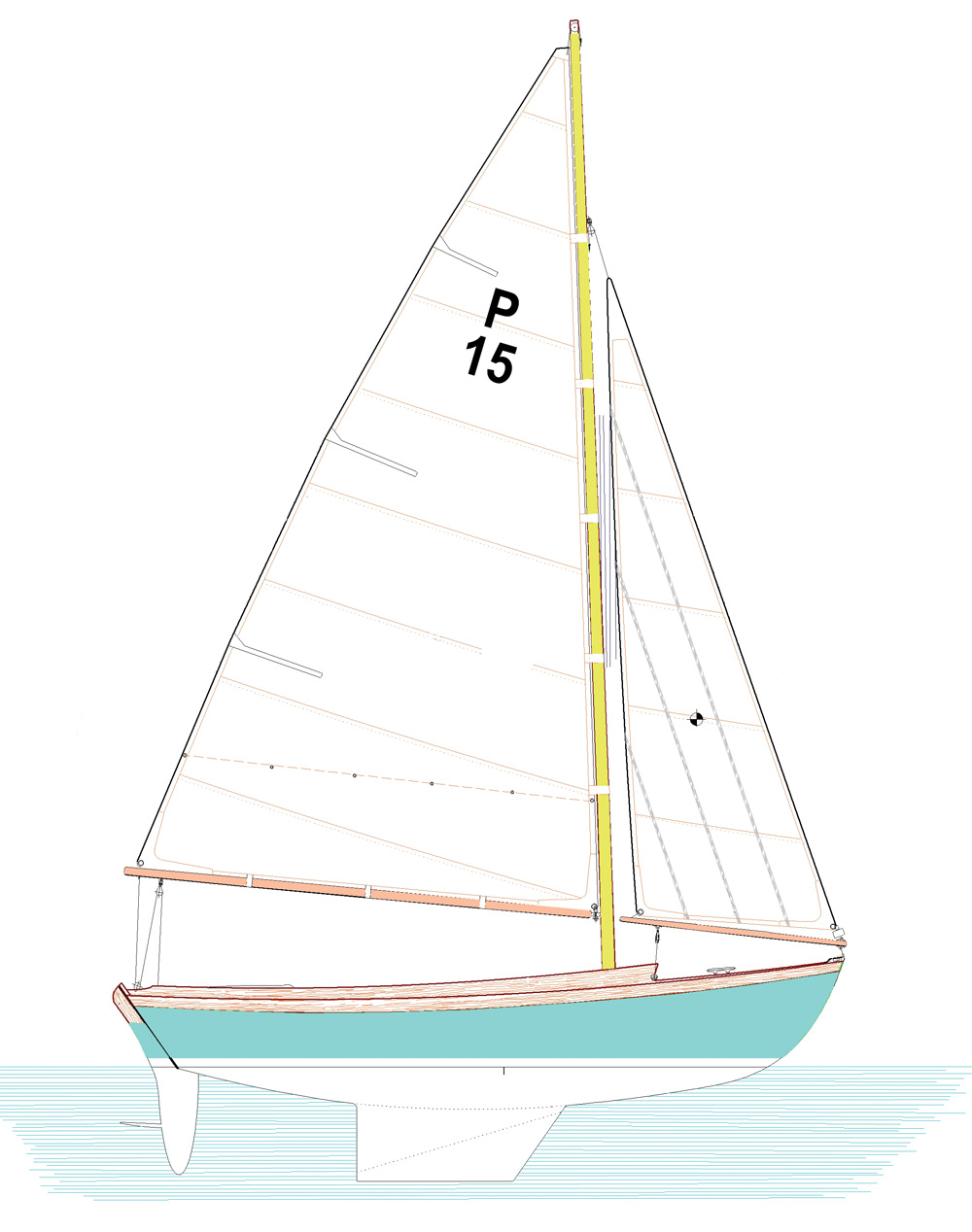Paine 15
A designer found the perfect client in creating a comfortable, powerful daysailer
Ithink it was about eight years ago when I heard that Chuck Paine had retired. I was incredulous. How do you walk away from your life? I called Chuck and found him a bit bitter due to the complications on the business and client issues side of the world of yacht design. There is that but I never let it get to me. I’ve been very fortunate. I felt robbed of the fun of seeing more of Chuck’s work as we both became senior citizens and masters of our craft. Maybe I felt there was always an element of competition between the two of us and how do you enjoy the fun of competition when the other guy won’t play?

In time, Chuck finally found a client he could happily work with, a good guy who appreciated Chuck’s skills and deferred to Chuck’s better judgement. That client was Chuck. Chuck began designing just what he wanted—small boats. Not everyone wants to sail over the horizon and be gone for a year. Some sailors only want to go out for a few hours in the afternoon and be home for dinner. Chuck likes classic proportions and designed his newest boat, the P15 a foot longer than his first design for himself and based very much on the Herreshoff 12 ½. The look would be virtually the same but only superficially. The shape and details of this boat are entirely Chuck’s effort to bring the old Herreshoff model up to 2020. Chuck knows performance and was after a wolf in sheep’s clothing.
The biggest break from Chuck’s 14-footer was the fin keel. The 14-footer had a real Herreshoff-style full keel with slack bilges. The 15 has a modern, moderate aspect ratio fin keel with a tight tuck at the hull and a much firmer turn to the bilge for better initial stability and less displacement.
The D/L of the 15 is 358 as Chuck calculated it. I took Chuck’s displacement of 1,000 pounds and added my weight of 230 pounds and 20 pounds of stuff and came up with a D/L of 316. The L/B is 2.76.
The partially balanced spade rudder has a Spitfire wing planform and is notched into the canoe body to eliminate that gap between the top of the rudder and the hull that can catch lines. Of course this means that the standard gudgeon and pintles off the transom won’t work with that balance area if you need to remove the rudder. Chuck used the same method I used on my carbon cutter series. There are gudgeons on both the rudder and the transom. Then a pin is dropped through all the pintles from the top. Pull that pin and the rudder falls off.
The deadrise is fairly constant from the midsection to the stern but the bow is almost identical to the Herreshoff model with distinct hollow to the waterlines forward.
Some of the most interesting and unique design features are to be found in the rig and the deck layout. The mast is a self-supporting carbon tube, thick walled and narrow in diameter for low drag. Rather than attaching hardware to the carbon mast tube for the mainsail luff, Chuck uses Velcro straps that are very easy to attach and that slide to leeward around the mast as the load on the mainsail changes. This gives you a cleaner leading edge to the mainsail luff, less drag and higher efficiency. What looks like shrouds in the photos is really the jib and main halyards led down to holes in the deck and with fairleads to cleats near centerline. Self-tacking jibs are always a problem. You ease the single sheet and the clew goes up, not out as you would like. The result is excessive twist in the jib and that’s not good. Chuck uses vertical full height battens in the jib to reduce that twist problem. The SA/D is 19.05.
In the end you have a boat designed to be stiff and powerful, perfect for older sailors whose hiking days are over. Ergonomics in the cockpit have been studied for the most comfortable cockpit seating. It’s a combination of many small details refined to perfection that make this boat unique. So, what is the price of perfection? All ready to go, with Chuck’s choice of all bronze hardware and sitting on the trailer you are going to have to pay close to $90,000 for this 15-footer. One new boat has been sold to a San Francisco owner. Chuck is keeping the first one.
LOA 15’; LWL 12’1”; Beam 5’5”; Draft, centerboard up 2’, centerboard down 4’6”; Sail area 114 sq. ft.; Ballast 465 lb.; D/L 316; L/B 2.76; SA/D 19.05
Our best estimate of the sailaway price: $85,000
French and Webb, Inc.
21 Front St.
Belfast, ME 04915
207-338-6706

Comments